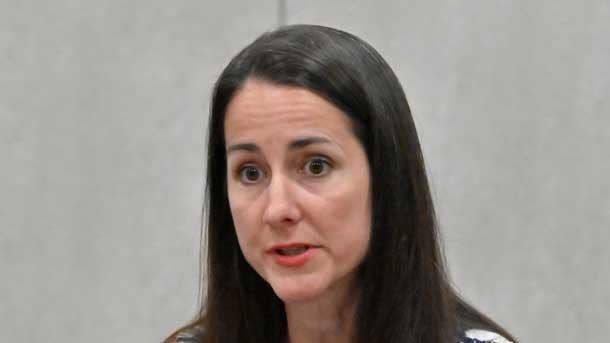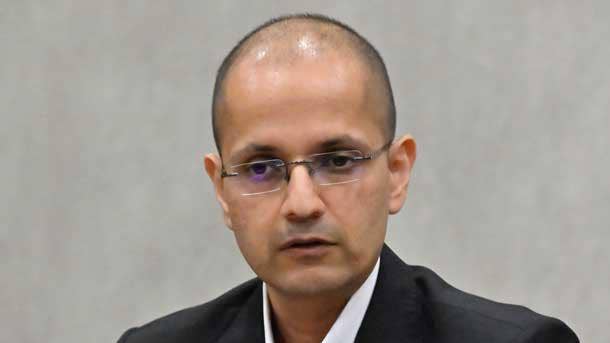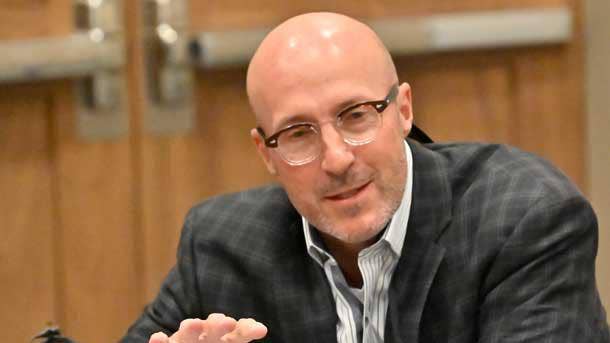Cisco, HP, HPE, Dell And Lenovo: As A Service Takes ‘Risk’ Off Partners
Top executives from Cisco, HP, HPE, Dell Technologies and Lenovo discuss taking on more risk and liability for channel partners as more customers seek to consume IT as a service.
Industry Shift Toward As A Service Changing The Partner-Vendor Relationship
Industry titans Cisco, Lenovo, HP Inc., Hewlett Packard Enterprise and Dell Technologies are taking on more risk and liability for the channel as partners shift toward a more cloudlike, as-a-service sales model.
As solution providers change the way they transact and sell to customers as more seek to buy and consume IT as a service, they say vendors are now providing the financing and capital necessary for them to do long term, multiyear recurring revenue deals. Traditionally, channel as-a-service deals are for three to five years.
Top executives and industry veterans from Cisco, Lenovo, HP, HPE and Dell Technologies recently met for CRN's Everything-As-A-Service Roundtable to discuss the growing demand for service-based offerings and the impact that has on channel partners, particularly as it comes to shouldering risk.
“The really neat thing—and the way we're looking at it—is we can size the opportunity, and we can adjust the risk profile to however the customer and the partner want to consume it,” said Nirav Sheth, vice president, partner solutions, architectures and engineering, for Cisco. “Because the partners do operate on razor-thin margins we want to be very pragmatic about making sure that we're delivering to them the right kind of incentives, rewards and capital structure that they need as they continue to balance their investments between a traditional model and these emerging models.”
CRN asked each executive the question, “How does as a service change the balance sheet for the partner and vendor?”

Paul Miller
HPE
VP, Global Marketing
We own the capital in a lot of the cases, probably the majority of the cases, but even when the partner takes the capital—because of the way we instrumented stuff—we're not putting them at a big risk. They're not like, ‘Holy cow, we don't use this stuff, HPE is not taking it back.’ We instrument this so tight that I don't think we've ever had a case where the partner really takes risk because we know what it is. We're monitoring it. Most of these deals scale up, scale down a little bit, but it's grow, grow, grow. I don't think we're throwing risk on [partners]. And again, if we still own the paper, in a lot of cases the partner still owns the relationship. They've signed the contract. They're the ones selling the outcome and leading that customer experience outcome. We're just in the back playing with the plumbing.
CRN: What’s the big difference between as a service and a leasing model?
Leasing is a financial construct. As a service is an outcome-based conversation where you're talking about the true service level you're going to have. In a lease there's nothing that says, ‘I'm going to guarantee you five-nines, six-nines, nine-nines availability.’ In a lease you’re not going to say, ‘I’m going to guarantee you this performance level and have a dashboard that says I'm going to give you this number of transactions per second.’ So it's such a different conversation. We don't even mix the two conversations as part of an overall spectrum.

Laura Laltrello
Lenovo
VP, GM, Data Center Services
It changes the risk. With TruScale, in terms of the balance sheet, we own the capital asset. So when we are creating the workload, sizing what the customer needs, sizing exactly what stack to put on it—it's a shared risk now with the customer and us. So if we do it incorrectly, the financial burden is on us. It's the profit we lose. So it helps create this bond and empathy with the customer and with the channel partner on that shared risk. Now if the partner has decided to financially fund the asset, then they would take on the risk and the asset would sit on their balance sheet, but it no longer sits on the customer’s. So it depends on the model the partner wants. If they want the model where they can come to us and use TruScale, we take on the financial risk—nothing changes for them. If they have their own leasing or consumption model that they are selling as well, then it would be on their balance sheet.
CRN: Do partners want you to take the risk?
Many of them would prefer that we take the risk. We're taking the risk and they're still getting the stickiness with the customer. So the nice thing is it is a shared risk that's passed through the channel partner. The channel partner has the relationship with the customer so they get both benefits. They get the benefit of not owning the risk but owning the relationship.

Nirav Sheth
Cisco
VP, Partner Solutions, Architectures, Engineering
For me, it's a little bit of a broader answer because I have so many different things in the portfolio ranging from utility-based models to Software-as-a-Service to traditional models. In the end, our opportunity is to be able to deliver whatever kind of risk model we want to deliver to the partner and ultimately through the end customer. We've got scenarios where third-party companies can take on all the risk on behalf of the partner. We've got scenarios that offer our capital structures called Cisco Capital Open Pay and Cisco Capital Easy Pay where Cisco Capital takes the risk. But again, the commercial terms and the relationship is owned by the partner. We've got hybrid offers where maybe there's a Capex outlay that either the partner or the customer could make on, let's say network gear, but then the software subscription can be consumed in a different way. The really neat thing—and the way we're looking at it—is we can size the opportunity and we can adjust the risk profile to however the customer and the partner want to consume it. Because the partners do operate on razor-thin margins we want to be very pragmatic about making sure that we're delivering to them the right kind of incentives, rewards and capital structure that they need as they continue to balance their investments between a traditional model and these emerging models. That's why we've done the things we've done with VIP [Value Incentive Program] annuity—you're going to be rewarded on the deal, you're going to be rewarded as you maintain that book of business, and you're going to be rewarded as you expand.

Brian Payne
Dell Technologies
VP, Product Management, Marketing
So today we offer two levels of flexibility. One is around the risk in terms of utilization. So we have completely open-ended arrangements that are zero-minimum commitment. And then we have other ones that are structured around expected utilization effort levels when we talk about, ‘Hey, what have you seen in the past? What do you expect with this part of your business?’ And we can structure it differently. So that's just about the flexibility of how we structure the offer, and then we can underwrite that on our paper and offer a partner the ability to resell that, then get compensated for doing that. But we also, for certain qualifying partners, have a more flexible model where we can allow that partner to invest and begin to take more of that risk onto their books, and then we're serving it to them in certain cases. So it's a mixed approach for us.
CRN: What are you finding to be the partner preference?
I would say that the majority of folks are leaning towards the first model that I described.

Gary Simms
HP Inc.
VP, Head of Americas Channel Programs, Enablement
As we get DaaS [Device as a Service] more broadly situated within our account base, we now have customers saying, ‘OK, we have that on the HP product, but we have a multivendor environment.’ As much as we'd want them to buy just all HP, that's not the case with most of the customers, especially big customers. I mean they'll have a very mixed environment in terms of hardware and operating systems. So they might have Apple, they have Android, and they have Windows [so they say], ‘OK, HP, what can you do to really bring that all together?’ And our DaaS now brings all of those different pieces together so they don't have to have transactional here and contractual here. Now you can do it all under one contract, one centralized agreement. I want to make sure that the partner community knows that we have that offering and that capability to offer managing PCs, mobile devices, Apple, Android, Windows—all within the DaaS environment. But that's what customers need, right? I think that's just part of the evolution of as a service evolving.
CRN: What’s the big difference between as a service and a leasing model?
With leasing, you're going to have a very specific and different lease for hardware, for software and for services typically. But rarely do you have [the capability] like in as a service where you can have it all in a central billing under one lease. And that's the way traditionally customers have done their leases. They'll have a lease for PCs, they'll have one lease for printers, a lease for the data center stuff, etc. So having an as-a-service agreement with centralized billing and having the warranty that's all within the same kind of terms and conditions brings a lot of value and efficiency to a customer.